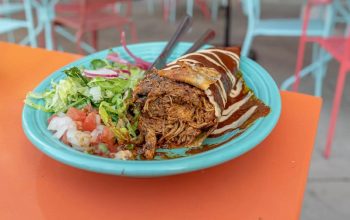If you run a café in Ilkeston, a deli in Duffield, a care home near Chesterfield, or a guest-house in the Peaks, your wholesaler is one of your most important partners. They influence what you can serve, how quickly you can pivot with the seasons, and how much cash you keep tied up in stock. For many independent operators in Derbyshire, the decisive advantage isn’t just “delivered wholesale” versus collection—it’s the practical difference a local wholesaler makes day to day. That’s especially true for fast-moving categories like Hot & Cold Drinks where availability and format choices can make or break margin.
This isn’t a negative comparison with national networks; they have real strengths. Rather, it’s a practical, quietly confident case for keeping your supply chain closer to home—so you benefit from agility, provenance, and community impact without compromising professionalism or price discipline.
The Derbyshire Difference: Why Local Matters
1) Shorter lead times, more forgiving cut-offs
A wholesaler with vehicles already running Derby-Chesterfield-Matlock routes can offer later order cut-offs and quicker top-ups. That means you can set realistic par levels, cut emergency retail runs, and protect margin on busy weekends.
2) Range tuned to local demand
Derbyshire’s food culture is distinctive—think walkers and cyclists in the Peaks, busy commuter corridors, and a strong farm-shop tradition. A local wholesaler tends to curate lines that actually move in your area, balancing national brands with regional favourites so you don’t carry dead stock.
3) Real relationships, faster fixes
When there’s a short, a mis-pick, or a product query, escalation is simpler. You get answers from people who know your account, your trading rhythm, and your pain points—so credits, substitutions, and on-van swaps happen quickly.
4) Sustainability with common sense
Shorter miles, smarter routing, and practical case sizes reduce waste without endless form-filling. In a county with treasured landscapes and a thriving visitor economy, those small decisions add up.
5) Working capital that breathes
Local wholesalers serving independents understand the weekly ebb and flow of cash. More frequent drops and sensible minimums help you avoid over-ordering while still meeting demand spikes.
What Customers Notice (Even If They Don’t Say It)
Customers rarely ask about your wholesale partner, but they do notice consistency, speed, and the small touches. Menus that don’t run out, displays that look full, and quality that doesn’t wobble mid-afternoon—that’s the invisible work of supply done well. When your supplier is nearby, you’re better placed to make quick tweaks: dial a flavour up, retire a slow line, or trial something seasonal without committing to a pallet.
Provenance Without Preaching
Derbyshire’s food identity runs deep—from historic markets to well-loved farm shops. A local wholesaler is more likely to source from regional producers and share useful product notes your staff can talk about. You don’t need to turn your menu into an essay; a one-liner on a blackboard (“Baked within 12 miles”, “Pressed in Staffordshire”, “Roasted in Derby”) gives guests a reason to care.
“I’m Searching for Suppliers—Where Should I Start?”
If you’re literally typing “food wholesalers derbyshire” into your search bar, you’re already on the right track. Shortlist providers who can show:
- depot and route coverage that match your neighbourhood;
- delivery windows that align with your opening hours;
- evidence of dependable stock cover on your top sellers;
- a straightforward process for substitutions and credits;
- a mix of national lines (for recognition) and local lines (for story and differentiation).
Ask prospective partners to review your top 50 SKUs from the last 12 weeks. A good local wholesaler will spot right away where you can trim waste, re-size cases, or press for a better price on volume.
Availability, Waste, and Cash: The Three Levers
Availability is revenue—if it’s not on the shelf or in the fridge, you can’t sell it.
Waste is profit leakage—usually fixable with the right case size and delivery cadence.
Cash tied in slow movers is silent risk—switching to split cases or tighter par levels can unlock working capital for staff, marketing, or equipment.
A local partner gives you more control over all three. Because they’re close, smaller, more frequent deliveries are realistic; because they know your area, they’ll steer you away from speculative listings.
The Quiet Power of Blended Buying
There’s no need to choose one model forever. Many operators do best with a blended approach: keep speed-sensitive, high-velocity lines with a local wholesaler (so availability and service remain rock-solid), and use a national network for deep specials, niche categories, or multi-site uniformity. The result is resilience without complexity.
Spotlight: Making Beverages Work Harder
Beverages are high-frequency, all-day, and often your most reliable basket builder. But they’re also weather-sensitive, brand-loyal, and trend-driven—so you need agility more than volume bravado. That’s where a local wholesaler excels: quick pivots, sensible subs, and right-sized cases.
Hot drink essentials
- Coffee: Lock in a dependable house blend, decaf, and grind options that suit your kit. Align cup sizes and lids (mis-fits kill throughput). Keep two alternative milks with real demand behind them.
- Tea: Carry a trusted everyday black, a premium breakfast or Earl Grey, plus decaf and two herbal options (mint and camomile are workhorses).
- Seasonal warmth: Plan for colder snaps with hot chocolate, spiced syrups, and sturdier takeaway lids.
Cold drink essentials
- Core softs: Still and sparkling water, a no-sugar cola/fruit mix, and a recognisable original.
- Energy & functional: Keep one mainstream energy brand and a “better-for-you” option; rotate flavours rather than expanding forever.
- Chilled juice & smoothies: Use tighter case sizes and a two-drop weekly schedule to protect freshness and cash.
Tip: Pre-agree substitutions for your beverage best-sellers. If Line A goes short, which Line B is taste-compatible, margin-safe, and cup/lid-compatible? Decide it now, not at 10:30 on a Saturday.
Price vs Value: Basket Thinking Beats Line-by-Line Sparring
No wholesaler is the cheapest on every line, every week. What matters is basket value across the month:
- Identify your KVIs (known value items) where price perception is sharpest.
- Negotiate sensible promotions with guaranteed stock cover (nothing erodes trust like phantom deals).
- Use case sizes strategically: bigger on true winners, smaller on slow or seasonal lines.
- Protect operations: margin lost to an “out of stock” or a packaging mismatch often dwarfs a tiny unit saving.
A Practical Checklist for Choosing a Local Wholesaler
Service & logistics
- Cut-off times, delivery days, and emergency top-ups that match your trade pattern
- Real-time ETAs and clear proof-of-delivery
- Clean crate returns and tidy, respectful drops
Range & quality
- Your top sellers are always in stock (with back-up plans)
- Balanced mix of national recognition and local interest
- Temperature control and packaging integrity you can trust
Commercials & clarity
- Transparent list pricing, promotions that actually land, and sensible minimum orders
- Invoices that reconcile without detective work
- Credit notes processed quickly when mistakes happen
Digital & data
- An online portal that doesn’t crash during the lunch rush
- Favourites lists and multi-site permissions if you run more than one venue
- Simple exports for your accounts package
Sustainability & community
- Route density that keeps miles down
- Practical recycling or take-back schemes where available
- Evidence of local sourcing and community support
Build a Smarter Beverage Assortment (Template You Can Use)
Base Range for Hot & Cold Drinks
- Coffee: house blend + decaf; dairy + two alt-milks; compatible cups/lids
- Tea: everyday black + a premium; decaf; mint & camomile
- Cold: still/sparkling water (singles & multipack), core cola/lemonade/orange, one zero/no-sugar, one energy, one “better-for-you” option
Seasonal boosters
- Autumn/Winter: hot chocolate, spiced syrups, sturdier lids, thermal sleeves
- Spring/Summer: iced coffee concentrate, iced tea bases, hydration waters, freezer pops (family sites)
Format discipline
- Use split cases where possible for slow flavours
- Cap the number of SKUs in any sub-category—depth overwhelms teams and confuses guests
- Agree par levels per daypart (breakfast, lunch rush, late afternoon) and adjust weekly
Small, focused changes compound. Fewer outs, fewer duds, and smoother service usually add more to GP than a marginal unit saving ever could.
Implementation Plan: Switch Without the Headaches
- Baseline: Pull the last 12 weeks of sales on your top 100 products (units, GP%, outs, waste).
- Prioritise: Ring-fence the top 30 by volume and the top 10 by margin contribution.
- Invite: Ask two local wholesalers to review that list and propose case size and delivery cadence tweaks.
- Pilot: Move Hot & Cold Drinks and one chilled category first. Keep everything else as-is for four weeks to create a clean comparison.
- Agree SLAs: Put cut-offs, substitutions, and emergency top-ups in writing.
- Run the numbers: Track availability, waste, GP%, and stock days every week.
- Decide: If the pilot delivers fewer outs, lower waste, and smoother shifts, expand the basket. If not, adjust and repeat for another four weeks.
Storytelling That Sells (Without the Hard Sell)
- Add a “Derbyshire Pick” each month: a local cordial, a roaster’s special, or a farm-pressed juice.
- Use menu icons sparingly to highlight local lines; back them up with a one-liner of provenance.
- Post quick supplier spotlights on social—no photo shoot needed, just a friendly shot at the delivery door.
- Train staff on three talking points: origin, taste, and why you chose it. That’s enough to make a recommendation feel confident, not scripted.
Risk Management: Weather, Events, and Substitutions
Derbyshire’s calendar—markets, match days, school holidays, bank-holiday traffic into the Peaks—moves demand in ways spreadsheets miss. A local wholesaler is better placed to:
- flag heatwaves or cold snaps so you can adjust pars two days ahead;
- plan drops around event traffic;
- swap in taste-compatible alternatives when a line goes tight.
Your goal isn’t zero risk; it’s making the risks boring and predictable.




